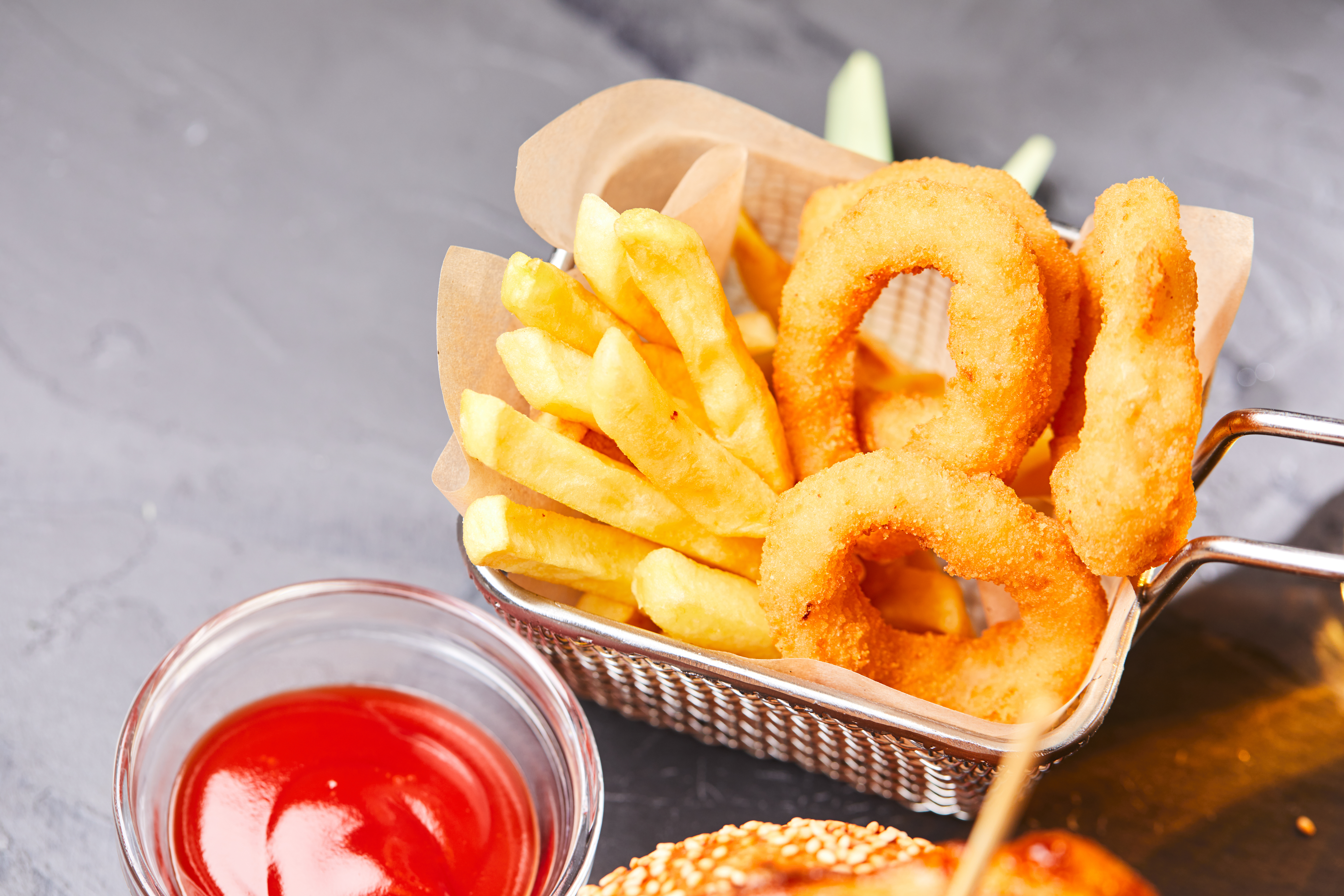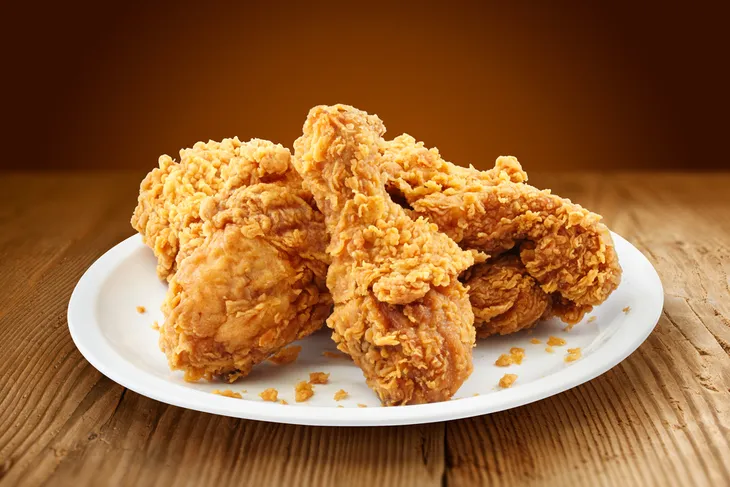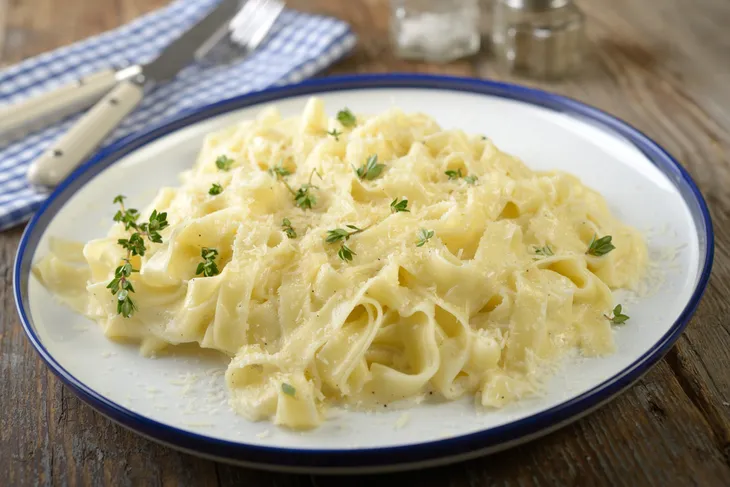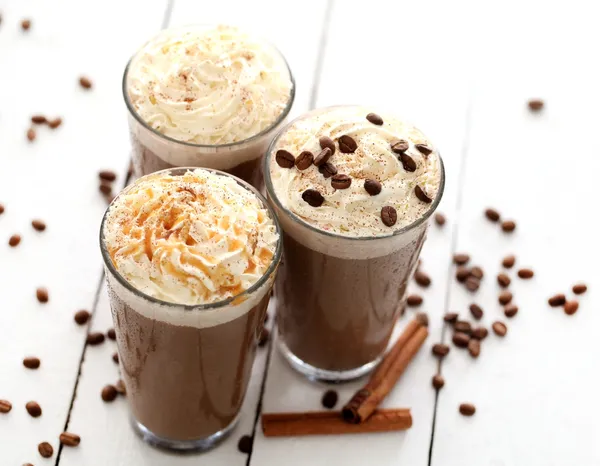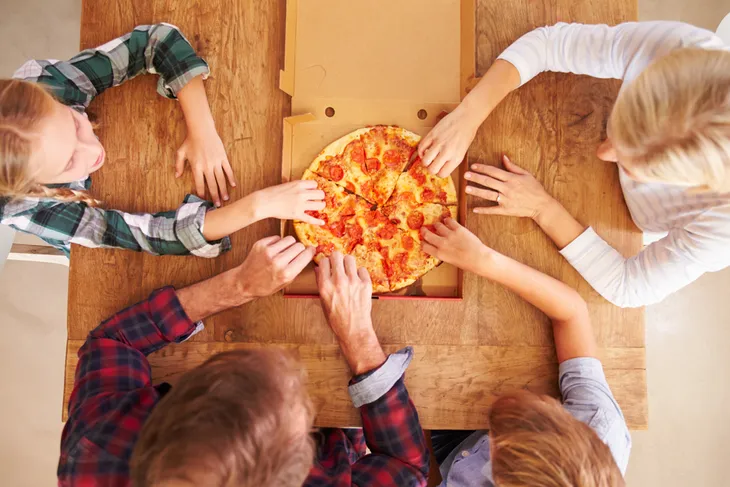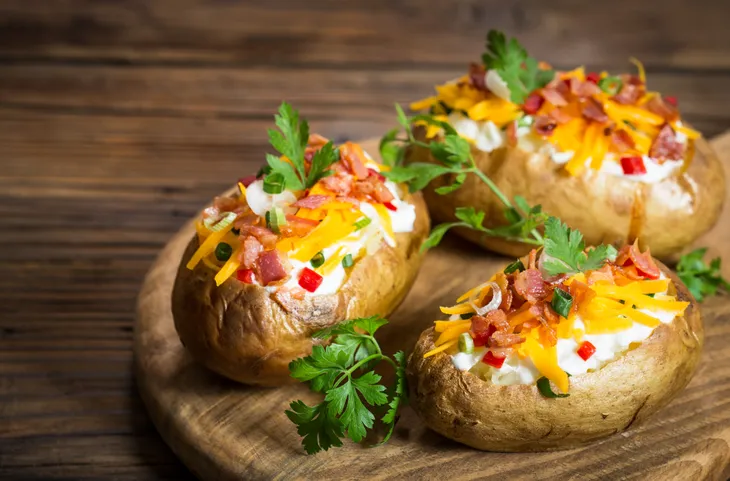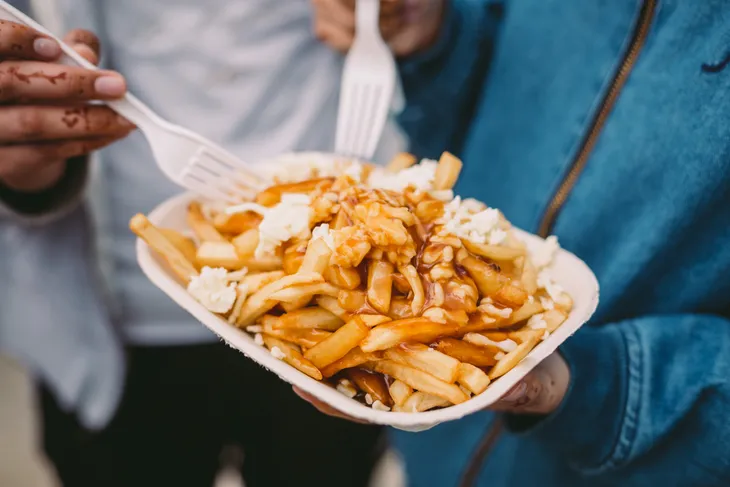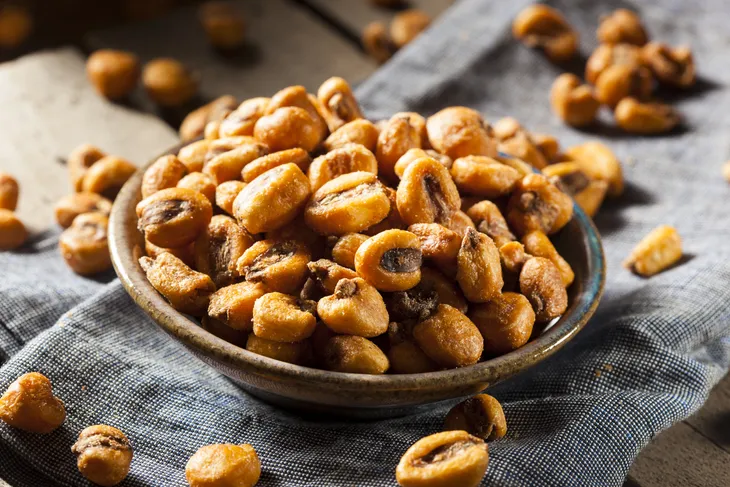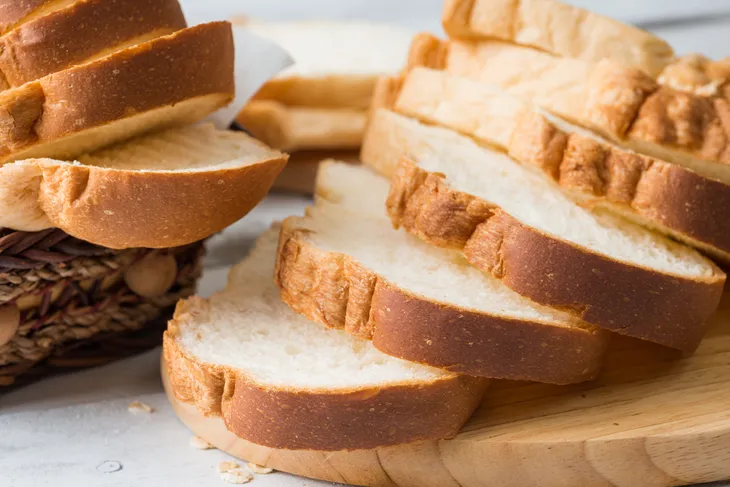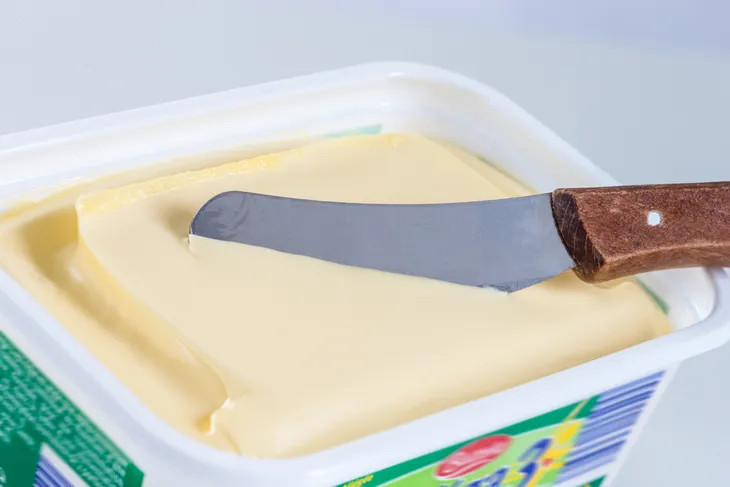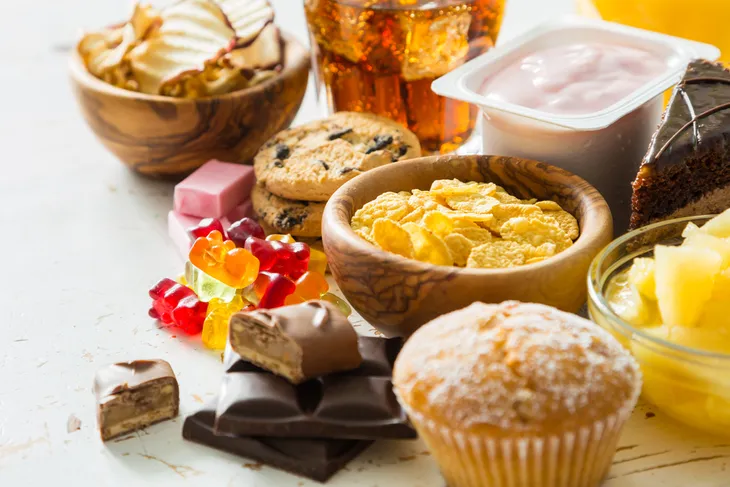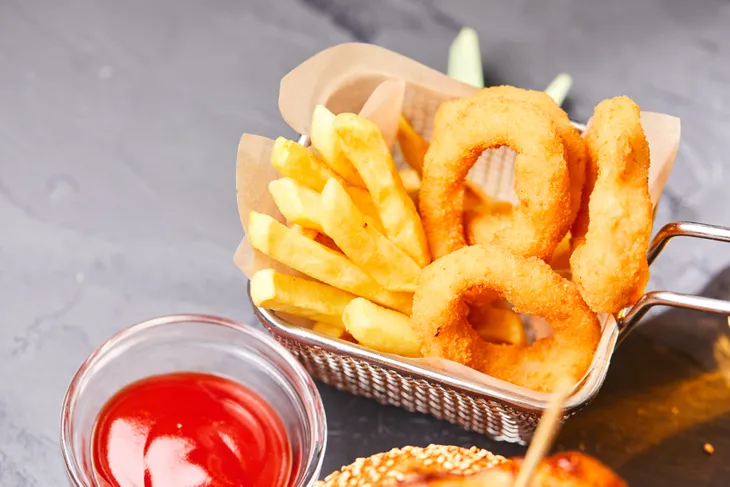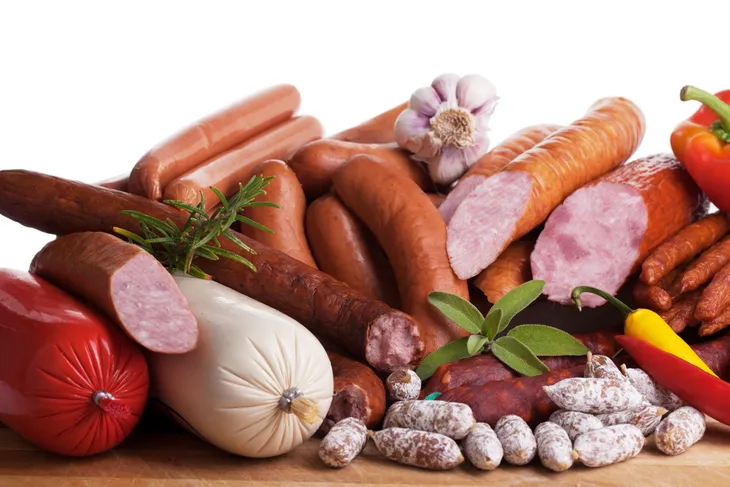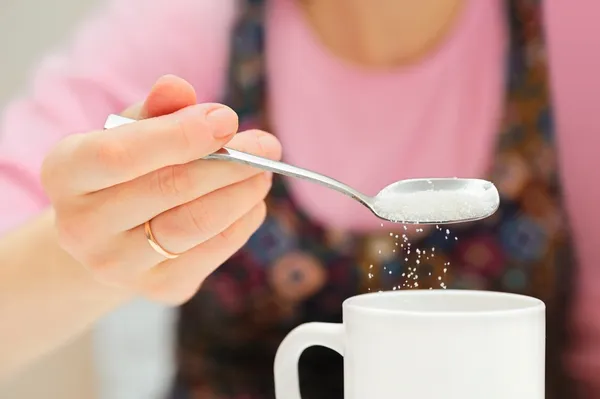Food is nourishment, but the world of food can be a dangerous place if we’re not conscious of what we put into our bodies. We are constantly bombarded with messages of what is healthy and what is not. Food marketers are always looking for ways to get us to eat packaged food.
A recent trend has been labeling food “natural” or “low fat” and “low sugar.” You can commonly see this with foods such as candy. A high sugar product is marketed as low in fat to trick consumers into thinking it is a healthier food.
Sometimes the worst foods for us are the most delicious. According to food experts, the key to eating healthy is having these treats in moderation. If you totally restrict foods, you may find you crave it even more. Use this list as a guideline to monitor whether you’re eating certain foods in excess. Speak to your dietitian to best plan how often these foods can be consumed, says registered dietitian, Julie Ching.
Here are the 19 worst foods that you may want to consider cutting out of your diet…
Theater Popcorn
One of the worst snacks you can buy at the theater is the popcorn. Unfortunately it is also delicious and addictive. It seems like you can go through a whole large bag of it before the previews are even over. A medium bag of popcorn, with butter topping, has more than 50-percent of your daily recommended calories.
Popcorn can be an amazing snack, if you cook it with an air popper and add a bit of olive oil and sea salt instead of buttery topping for a lower calorie snack that’s not only cheaper, but healthier as well. And, if you’re hoping to add some protein to your movie snack, mix in some raw nuts (i.e., almonds, walnuts, and peanuts) into your bowl and munch away!
Fried Chicken
Many people say that fried chicken doesn’t absorb the oils it’s cooked in. While it may be true that cooking in very hot oil can prevent the chicken meat from getting greasy, the breading on the chicken does absorb deep-fried oil and is often full of trans fat and calories. Restaurant and store bought fried chicken is even worse, because it can contain saturated and trans fats in additives.
Instead of frying the chicken, try baking it in the oven. You will still get a crisp coating, but you can cut the calories in half. You can also make your own healthier chicken coating using whole grains (i.e., oats, whole grain cereal, or quinoa) or simply opt to go coating free by marinating lean chicken breasts and baking them instead.
Fettuccine Alfredo
This classic Italian-American favorite is packed full of calories and extra fat. The original dish is just Parmesan mixed with butter, but modern versions are filled with heavy cream and refined white pasta. However, this pasta dish doesn’t have to be so unhealthy. Opt for tomato based sauces to cut calories and get more vegetables in your diet.
Whole grain pasta will also fill you up faster and keep you full for longer. You can easily find whole grain fettuccine noodles or soba noodles, or go completely gluten free with rice noodles. Add finely diced vegetables like peppers and mushrooms to make your meal even more nutritionally filling with an extra boost of vitamins, and incorporate lean chicken breast for a light yet filling protein.
Fancy Coffee
Many people enjoy their morning coffees, but you could be packing on the pounds with this seemingly innocent drink. Black coffee has 0-5 calories per glass, making it a smarter kick-starter in the morning. But as soon as you start adding in cream and sugar, the calories go up. Fancy coffees are much worse.
The majority of fancy coffees add flavor by adding syrupy shots, which are basically flavoured refined sugars, topped with whipped cream, and drizzle on caramel or chocolate sauce. I’ll bet you can already envision the calories adding up to well over 500 for one drink. To cut calories, take your coffee black or with a bit of cow’s milk, almond milk, or soy milk. You can even find almond and soy milk in lightly sweetened vanilla versions.
Delivery Pizza
Pizza is a weekend favorite for many families, including mine. Not only is this tradition expensive, it could be expanding the waist line. Adding on extra cheese and fatty meats like pepperoni is a delicious, but unhealthy choice. One slice of pizza could be an entire meal’s worth of calories. Deep dish pizza is a particularly bad choice.
You get extra carbohydrates and calories in the refined crust and fatty cheese, but less of the delicious and nutritious vegetable toppings! Your best bet is to make your own thin crust pizza at home, and top it sparingly with low fat cheese and lean meats. Add on all the roasted vegetables your heart desires.
Fully Loaded Baked Potatoes
This popular side dish is packed with extra calories and fat. Potatoes themselves are a starchy carbohydrate with little nutritional value. Topping them with butter, sour cream, cheese, bacon, and more can be heart attack inducing. The good thing is that it is easy to turn this unhealthy food into a smart choice.
Skip the butter on your baked potatoes and use low fat sour cream or plain Greek yogurt for added protein at half the calories. If you want to add cheese, use a low fat variety. Add on salsa, green onions, and other low calorie toppings. Or you could also opt for a more flavorful and vitamin-rich sweet potato.
Poutine
While delicious, poutine is one of the more unhealthy foods you could eat. Fried potatoes are topped with artery clogging cheese curds and coated in thick fatty gravy. This French Canadian favorite is packed with fat. If you love topping your fries with layers of delicious foods, then try this healthier combination.
Baked your potato wedges instead of frying them to cut back on the saturated fats. Top them with chili, salsa, or a thick tomato-based ragu. Sprinkle on low fat cheese and enjoy this treat. Or do one better, and make your “fries” baked sweet potato wedges baked the exact same way in the oven. If you’re not big on totally forgoing white potatoes, do half regular potatoes and half sweet potatoes.
Beer Nuts
Beer nuts, honey nuts, and chip nuts are all unhealthy snacks. These peanuts are coated in breading, spices, and sugar. They are then fried, amping up the calories even more. Nuts are a great snack if they are dry roasted, unsalted, and left raw. Beer nuts are a popular snack for watching sports, but it could be hurting your health by grabbing for too many handfuls of this treat.
Instead, enjoy the baseball favorite of unsalted peanuts in their shell. This will keep your hands busy, making you eat less of these high sugar, high calorie nuts. Plus, raw peanuts in the shell are great for your heart and overall health! According to a study published in the American Journal of Clinical Nutrition, diets rich in monounsaturated fats (as from raw, unsalted peanuts) reduce the risk of cardiovascular disease by roughly 21-percent.
Mixed Drinks
A mixed cocktail is delicious, but it may contain hidden calories. A gin and tonic could contain close to 200 calories per glass. Tonic water is surprisingly high in sugar. Nutritionists recommend opting for soda water instead, which has zero calories or sugar. Many mixed drinks contain simple syrup, which is just sugar and water.
Also look for extra calories in added soft drinks and juices. Blended drinks can be particularly bad. A pina colada could be an entire meals worth of fat and sugar in one drink. Instead, look for drinks mixed with soda water, a splash of fresh fruit juice, and fresh or frozen fruit. I like to use sparkling waters (i.e., Perrier) to add some zip to my summer beverages without the added calories from sugar.
Milkshakes
Milkshakes are a popular diner beverage, but they are very unhealthy. A large milkshake could contain 5-cups of ice cream, plus added syrups and cream. Ice cream parlor milkshakes are just as bad. Certain brands can contain over 3000-calories in one drink! If you enjoy a creamy cold drink, then try a fruit smoothie instead.
Scoop low fat yogurt into a blender and blend with assorted mixed fruits. You’ll get your delicious frothy glass, but save a ton of calories. You can also do one better by making your milkshake a healthy smoothie. Simply combine plain Greek yogurt with a frozen banana, frozen berries (raspberries and blueberries), a handful of healthy greens (i.e., baby spinach), and water or vanilla almond milk. Slurp!
White Bread
One of the easiest and best substitutes a person can make when trying to eat healthier is to swap out white bread for a whole grain option. We’re not just talking about white bread either, this includes refined grains in general which includes bread, pasta, rice, crackers, and pretzels. These foods have all been stripped of any nutritional value and are full of sugar.
“This type of grain has a higher glycemic index, meaning the sugars can be absorbed into the bloodstream faster, often causing a spike in blood sugar levels,” explains Sharon Palmer, RD, a southern California-based registered dietitian. The best way to make a conscious decision is to check labels. Only buy bread, rice, or pasta that has the word ‘whole’ as one of the first ingredients. If the first ingredient listed is ‘wheat’ then it is a refined grain with less nutrition, says Rachel Brandeis, RDN to Health.com.
Fruit Juice
A lot of people fall victim to the fruit juice trap. Brands love to point out that their product is made with “real fruit” and that it has less sugar. Don’t be fooled. Fruit juice is never a good option. Many of them are basically just fruit-flavored sugar water.
“It is true that the juice contains some antioxidants and vitamin C, but this must be weighed against the large amount of liquid sugar,” writes Healthline. “In fact, fruit juice contains just as much sugar as a sugary drink like Coke or Pepsi, and sometimes even more.” As always, read the label. The best thing to do is avoid fruit juices altogether, but if you must purchase them, buy the brand with the least amount of sugar.
Margarine
Margarine is one of those staples you’ll find in pretty much every person’s refrigerator. No one eats it on their own (at least that we know of), but for many of us it’s used for baking, some cooking, or to simply make a sandwich. However, many dieticians warn that margarine can be dangerous to our health, even the ones that brand themselves as a healthier option.
“While many margarine brands are beginning to remove the trans fats from their products in order to comply with FDA regulations by 2018, most margarines rely primarily on highly processed vegetable oils (particularly soybean and palm oil),” says Megan Faletra, MS, an integrative dietitian nutritionist to Reader’s Digest. “Choosing grass fed organic butter in moderation is a much better option for our health as these butters contain high-levels of heart healthy omega-3 fatty acids.
Desserts (Pastries, Cookies, and Cake)
There’s a reason we only eat dessert once in a while and it’s usually after a nice hearty meal. Desserts like pastries, cookies and cake are something we should only be eating once in a blue moon, if at all. They are definitely not something we should be eating on a regular basis.
Why is that? Well for starters, they’re full of sugar. But more importantly, Healthline points out that they’re made from refined sugar, wheat flour and added fats “which are often disturbingly unhealthy fats like shortening (high in trans fats).” They are almost completely devoid of any nutritional value and contain tons of calories and fat content.
French Fries and Potato Chips
Just like desserts, this one is pretty obvious. We shouldn’t have to go into too much detail of why these foods are bad, but for the sake of this article, we will. Don’t be fooled by the fact that they are made from potatoes which can be enjoyed in a healthy way. French fries and potato chips are dangerous because it’s extremely easy to consume too many of them. They both have a huge calorie count and have been known to cause weight gain.
“These foods may also contain large amounts of acrylamides, carcinogenic substances that form when potatoes are fried, baked or roasted,” writes Healthline.
Sugary Cereals
The big problem with this food is right there in the name…too much sugar! We tend to forget that what we’re eating is actually more of a desert than a breakfast because of the fact that it’s in the form of cereal. Time for the wake up call. Health.com points out that one serving of cereal is just half a cup, so someone eating a big bowl of cereal is basically eating the equivalent of a candy bar for breakfast. Yuck!
“A good way to judge whether a cereal is too high in sugar is to avoid brands with more than 12-grams per serving,” says Rachel Brandeis, RDN, when talking to Health.com. “If you really enjoy the high sugar-based cereals, try filling your bowl with half high-sugar cereal and half low-sugar cereal to dilute the amount of added sugar.”
Processed Meat
Processed meat is a little scary because it’s usually unclear where it came from. A plant-based diet is the most healthy way to go, according to some nutritionists, but for a lot of people, meat isn’t going anywhere from their diet anytime soon. In that case, be sure to only eat meat that is unprocessed because “processed meats, like deli meats, hot dogs, sausages, and cured selections tend to be high in sodium, preservatives, and saturated fat,” says Roger Adams, PhD, a Houston-based nutritionist.
According to Healthline, there have been studies that have found people who eat processed meats are a higher risk for developing colon cancer, type 2 diabetes, and heart disease. While these studies are purely observational and cannot prove for fact that processed meat was the underlying cause for these diseases, there is a strong and consistent link.
Artificial Sweeteners
There’s nothing sweet about artificial sweeteners when it comes to health. First of all, anything that is artificially made will most likely not have any nutritional value.
Reader’s Digest talked to Chelsey Amer, a registered dietitian and nutritionist who says: “I do not think there is sufficient evidence to prove that most artificial sweeteners are safe for consumers, so I prefer to stay away from them and indulge in the real thing [sugar] occasionally and mindfully. Plus, there’s a plethora of research that shows how consuming diet beverages may counter-intuitively lead to weight gain, which can increase your risk of chronic diseases like diabetes and heart disease.”
Processed Cheese
Regular cheese plays an important role in a well-rounded diet, but processed cheese has no place in any person’s diet. Ever noticed that processed cheese has a much different texture than regular cheese? Yeah…there’s a reason for that. While regular cheese has lots of nutrients and protein, processed cheese is basically made from what Healthline describes as “filler ingredients.” These are ingredients that were engineered to look and taste like cheese, but that’s about all they have in common.
To give an idea of just how bad processed cheese is, Health.com says one grilled cheese made with two slices of white bread and two slices of processed cheese can amount to 700-milligrams of sodium. That’s already half the amount one person should consume in a day. The best way to educate yourself is to read and compare labels. Always opt for whatever is more natural.

